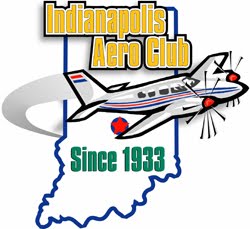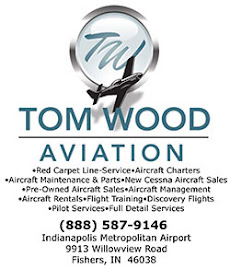Edward F. New, William Sherman and Dr. Charles W. Roller founded our present club in June, 1933. The club started with a group of about thirty-five aviation minded persons. The Hoosier Flying Club preceded our club. It, in turn, was preceded by the Aero Club of Indianapolis which was formed in 1922 by members of the 464th Pursuit Squadron based at Schoen field to “make Indianapolis Calgary , Banff , Martha’s Vineyard, Nantucket, Yellowstone, the Grand Canyon , and more. On one trip to Florida Rough River State Park and lunch on a stern-wheeler on the Ohio
The club came close to dying in 1983, when membership dropped to about forty-five members with less than twenty people at the meetings. Bob Bruce took over the presidency and instituted many changes in the operation of the club. For some six years he served as a one man committee, personally finding the speaker, making site bookings, menu selections, doing the complete “Report & Meeting Notice” mailings (writing, printing, folding, addressing), and receiving the reservations. The paying of expenses for guest speakers with the increased attendance easily offset the cost. In the first year, the membership jumped to over 200. This was a new beginning for the Indianapolis Aero Club. “Hoosier Hospitality” and obtaining many notable speakers have gained a nationwide reputation for the club. Space does not permit listing all of the over 200 notable speakers which included air race pilots, hump pilots, astronauts, the originator of the “Star Wars” anti-missile program, the heads of aviation museums, the founder of the EAA, three survivors of the “Memphis Belle” (one of whom included our scholarship program in his will), many military aviation heroes, the heads of aircraft factories, and many authors of aviation related books, such as “God Is My Co-Pilot”.
We enjoyed a Concorde flight engineer that British Airways sent from London
Our own members have also provided excellent programs. In the past, these have included a member of a parachute jumping team that forms intricate formations as they freefall, a member who flew his Bonanza to Hawaii , two members who flew around the world in a single engine Piper and returned to Indiana
Early in the “rejuvenation” years, a scholarship program was initiated. A gamble of chartering commercial flight to Oshkosh before the seats were sold paid off, and other charters were sponsored, including the Air & Space Museum in Washington, NASA in Huntsville , and two trips to Pensacola , including a day at sea watching planes take-off and land on the Lexington , and a trip to the new Aerospace Museum
The club helped sponsor the Blue Angels and Thunderbirds in past years.
Today, our club is healthy, but changing. A larger percentage of the members are “Aviation Enthusiasts” rather than pilots. As a result, most of our “Fly-Outs” are in a commercial charter jet rather than a Piper Cub of Cessna. We seem to have become a “once a month dinner meeting and speaker” social club with actual flying activities confined to a relatively small group. This is not necessarily bad; however, we must maintain our excellent programs to maintain membership. “Service” programs such as the scholarship and Young Eagle programs must be expanded to bring in young members. Hopefully, the new crop of general aviation airplanes will bring about a resurgence of pilots, and we can once again have forty-five planes headed for Florida





